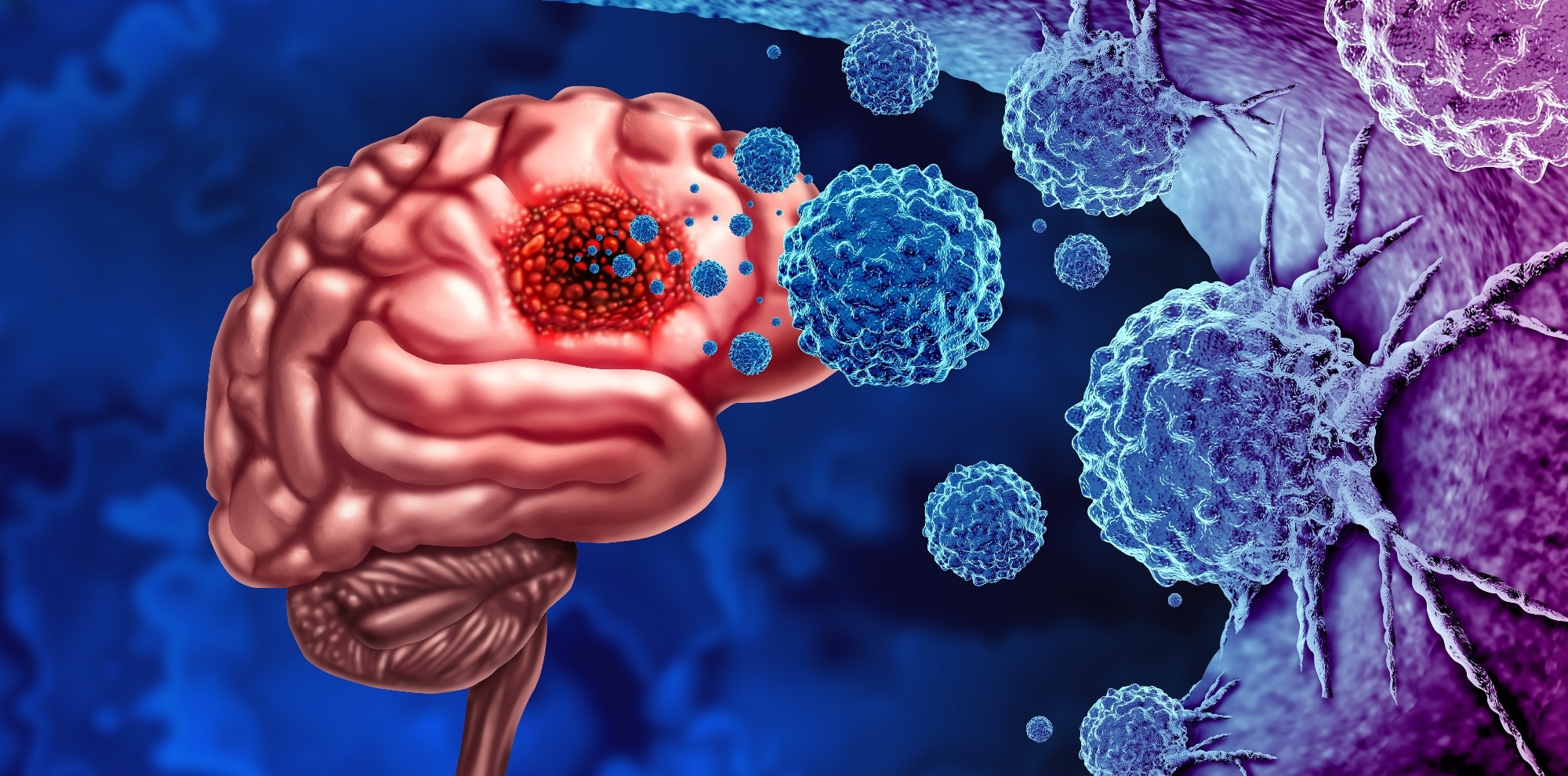To this end, they conducted a bidirectional Mendelian randomization (MR) analysis using genome-wide association study (GWAS) data.
 Study: Association between viral infections and glioma risk: a two-sample bidirectional Mendelian randomization analysis. Image Credit: Lightspring/Shutterstock.com
Study: Association between viral infections and glioma risk: a two-sample bidirectional Mendelian randomization analysis. Image Credit: Lightspring/Shutterstock.com
Background
Lower-grade gliomas (LGG) fall into World Health Organization (WHO) grade I–III; however, glioblastomas (GBM) are aggressive, falling into WHO grade IV.
In fact, GBMs constitute 49% of all malignant brain tumors whose prognosis and survival rates are poor. They cause immense physical and emotional discomfort to cancer patients and their families and financial expenses, with average yearly costs for caregivers reaching up to €5,581.49.
Previous studies have pursued the causes of glioma but failed to find its etiology. Recently, the focus of researchers shifted to exploring previous viral infections as a risk factor for glioma.
Like human cytomegalovirus (HCMV), herpes zoster, causal agent Varicella Zoster Virus (VZV) has remained consistently associated with glioblastoma risk. However, while HCMV increases the odds of glioma incidence, herpes virus protects against glioblastoma.
Researchers have also investigated the role of other viruses in this context; for instance, Vidone et al. reported human papillomavirus (HPV) infection has a poor prognosis for glioma.
Furthermore, it would be of great interest to know whether sequelae of severe acute respiratory syndrome coronavirus 2 (SARS-CoV-2) infection led to glioma.
Methodological biases are inherent in observational studies, and it is unethical to conduct randomized controlled trials (RCTs) to infer causality between viral infection and glioma.
Consequently, the relationships between some invasive viral infections, e.g., hepatitis B virus (HBV) and glioma, remain poorly understood.
About the study
In the present study, researchers focused on 12 different viruses, namely VZV, herpes simplex virus (HSV), poliovirus, human immunodeficiency virus (HIV), SARS-CoV-2, mumps virus (MuV), HBV, measles virus (MeV), rubella virus (RuV), HPV, HCMV, and EBV and their causal association with different glioma subtypes.
They used the two-sample MR approach that uses genetic variation as an instrumental variable to assess the causal association between viral infection and glioma with minimal confounding and reverse causality.
In the MR design, researchers followed fundamental premises and additional assumptions to ensure the reliability of the results.
These were that genetic variations are robustly related to viral exposure and independent of any potential confounders and outcomes, except exposure.
In statistical analyses, they selected single nucleotide polymorphisms (SNPs) with significant p values (P<5 × 10–6) as instrument variables (IV) and applied a clumping process to identify independent SNPs for analysis.
First, they assessed SNP causality using the Wald ratio, and where > 1 SNP worked as an IV tool, they used the inverse variance weighted (IVW) method for their meta-analysis.
Additionally, they utilized MR–Egger and weighted median methods to complement the IVW method because, unlike the IVW method that considers all IVs to be effective, it yields consistent causal estimates considering 50% of SNPs as effective.
The team presented MR results using odds ratios (ORs) and confidence intervals (CIs) for nonbinary exposure and converted ORs for binary viral infection exposure. A false discovery rate (FDR) correction accounted for bias from multiple comparisons.
Results
The team used data from 19 GWASs, of which 18 were from viral infections, one from glioma, and 12,488 were glioma cases. The SNPs ranged from four to 48, and the F statistics of each SNP indicated they were robust.
Pair of SNPs and outcome MR estimates varied from three to 22 in the primary analysis, where eight causative association features had P<0.05.
The association between genetically predicted HSV infection and LGG risk did not vary across cohorts. After FDR control, genetically predicted VZV and HSV infection could alter the LGG risk.
The former reduced, while the latter increased the risk of LGG, with respective ORs=0.85, 1.17; P = 0.01; FDR = 0.04.
The ORs for genetically predicted symptoms caused by MuV, EBV, HCMV, SARS-CoV-2, HPV, HBV, RuV, or MeV infections suggested no causal relationship with LGG risk.
Intriguingly, genetically predicted measles had a nominal and herpes zoster had a suggestive causal association with GBM and all-gliomas, respectively, with IVW P<0.05 and FDR>0.05. The direction of this causality was consistent across cohorts.
The researchers found no evidence of heterogeneity among the selected IVs, any outliers, or horizontal pleiotropy.
Furthermore, genetically predicted GBM had a suggestive causality with a lower risk of mumps and acute poliomyelitis (ORs = 0.78; 0.69, P = 0.02;0.01, FDR = 0.13).
Conclusion
This study showed evidence supporting that genetically predicted herpes zoster caused by VZV infection can reduce the risk of LGG. In fact, the causal associations for GBM and LGG were strikingly opposite.
Accordingly, herpes zoster increased the risk of GBM but decreased that of LGG. These findings substantiate and further reinforce the previous perspective.
However, more research validating the causation between VZV infection and glioma is needed to elucidate the underlying mechanism. Nonetheless, VZV may prove to be an ideal candidate for glioma virus therapy.